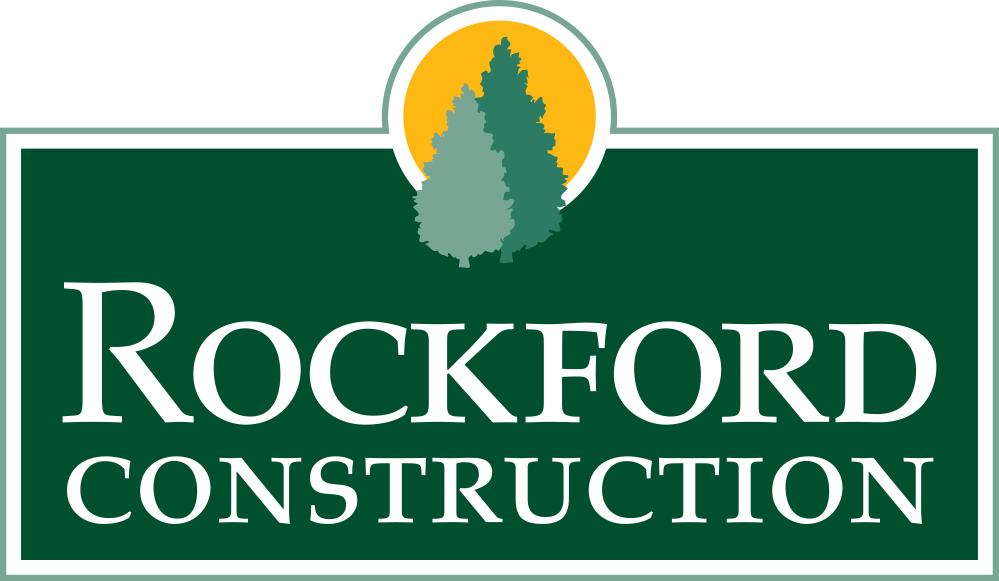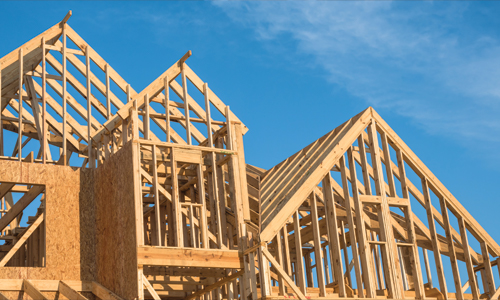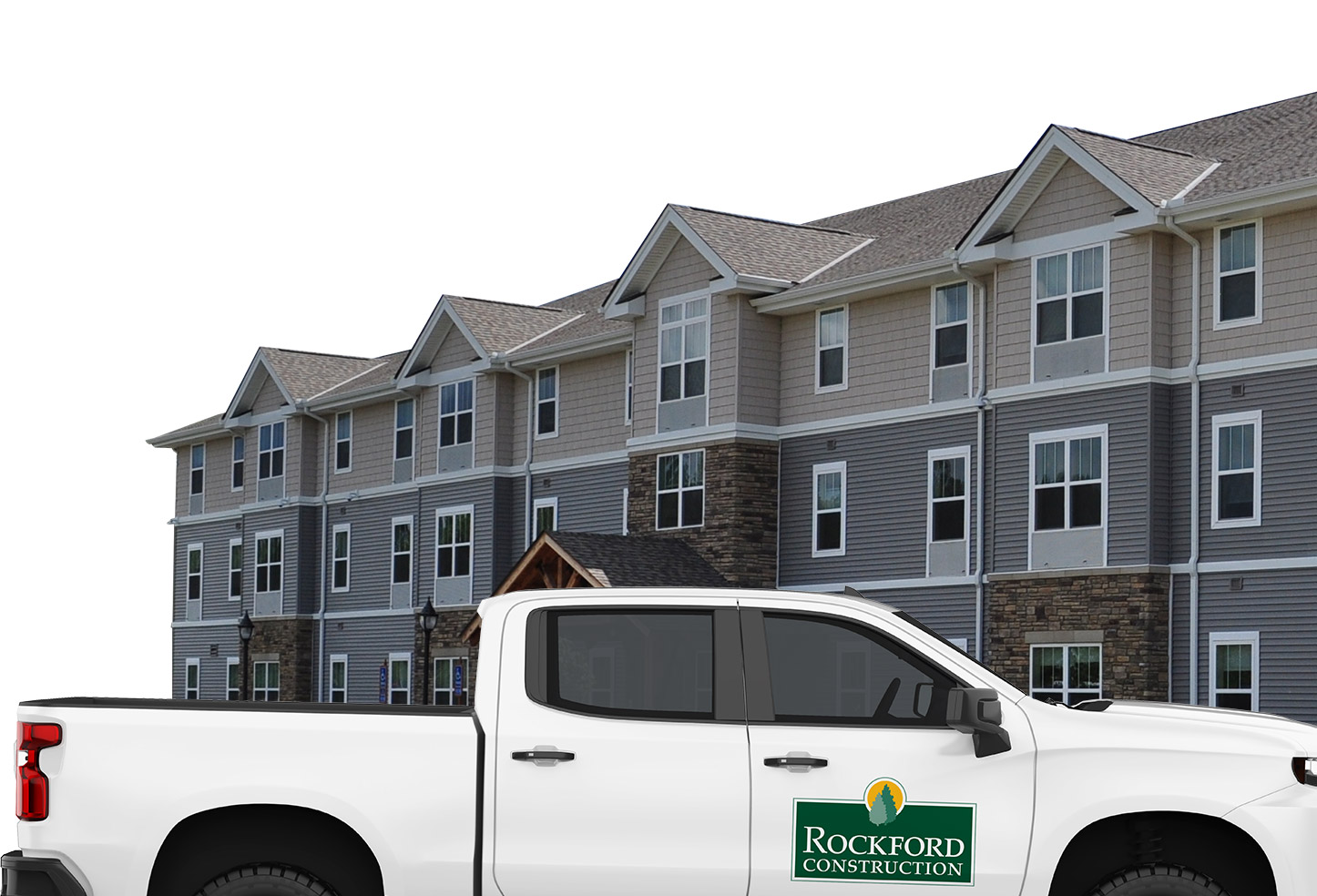So, you’re looking to invest in building your own multi-family construction project. So now what? A multi-family residence is a smart investment and steady form of revenue, you just have to get started. As experts, we answered the top 10 questions you may be asking about multi-family construction projects to help you get started.
Q: What is multi-family housing?
A: Multi-family housing is any structure in which more than one family lives. Distinctly set apart from individual homes, these properties can exist in basically any size from just a few units to over 100 units.
A multi-family construction project can include anything from as simple as a six-unit apartment building to massive highrise complexes that house hundreds of families. It’s important to clarify that multi-family housing complexes can be both residential and commercial properties.
Mixed-use multifamily housing has become more and more popular in recent years that can include multi-family dwellings, retail shopping, and restaurants all in a single building.
Q: What is the difference between single-family and multi-family residences?
A: A single-family residence consists of one family living in a single free-standing structure. Multi-family buildings house multiple families in separate dwellings located in a single building.
Q: What are the benefits of multi-family housing investments?
A: Multifamily housing investment offers more flexibility and diversity compared to single-family investments.
An unoccupied single-family dwelling brings in no income, and due to the nature of the home, it cannot be partially rented. A partially inhabited multi-family complex brings in at least some revenue. Therefore, a multi-family complex has more reliable income than single-family dwellings due to the greater opportunity to alter rent by unit.
Another benefit of multi-family housing is the ability to purchase multiple units with a single financial agreement.
Let’s say you want to buy three single-family homes. In this case, you have to apply and receive three separate mortgages, one for each home. More than one mortgage over multiple properties is a massive hassle. Now you have three separate mortgage payments, property tax payments, and individual property insurance policies on each home.
In the case of multi-family developments, it is a little bit different. All you need is one loan or investment vehicle per multi-family residential project. It’s as simple as that.
Q: Why should I build a multi-family property rather than buy one?
A: Rather than looking for an investment property to purchase, building a multi-family development allows you to customize every aspect, characteristic, and feature of the building – ultimately giving you more control over your end product.
In addition, new construction is just that, new! You don’t have to worry about old wiring, appliances, siding, and stale designs in your apartment construction. You also have the luxury of selecting the prime location for your building.
It is a good idea to choose an up-and-coming neighborhood. A well-thought-out building site means you can charge top-tier rent. The value of your investment will also appreciate over time as the area evolves and flourishes.
Q: What are the costs associated with multi-family construction?
A: You’re always going to have some unexpected costs when building. Mitigate these costs in the design and pre-construction phase by having a detailed budget. Fortunately, there are some known costs you can anticipate.
Known costs consist of soft and hard costs. Soft costs consist of intangible expenses. These intangibles are permit fees, legal fees, interest fees, architectural fees, and other similar costs. Hard costs are costs associated with actual construction. Hard costs include the price of laying the foundation, framing, roofing, and finishing your development.
As a general rule, you can expect to pay around $85 to $200 per square foot of construction, depending on your market. There are outlier markets where this price can be much, much higher. Construction costs increase 3.5 to 5.5% annually. Remember to anticipate these rising costs as your project progresses.
Q: What qualities should you look for before beginning to build a multi-family complex?
A: There are some terrific indicators to look for when building a multi-family development that can tell you if this is the right deal for you.
First, what’s the location of the potential site? Look for opportunities in high-growth areas where demand for properties is high. Ideally, these areas are in safe and clean neighborhoods.
Second, you want to assess the total number of potential units on the property. Smaller developments, like duplexes and triplexes, offer less risk and are ideal for the beginning investor.
Next, calculate the potential income and some of the hypothetical costs of the development. Calculate prospective rent and revenue by looking at similar properties in the area and getting an idea of how much they charge for their units.
Potential costs and financing will differ from situation to situation. Participating in apartment construction almost always requires additional funding from traditional lenders.
Finally, consider doing business with other potential investors or partners and if they’re a good fit for you.
Q: What are some issues associated with building multi-family housing complexes?
A: Most issues with multi-family development arise either during or after construction. Common roadblocks include using poor material during construction, improperly sealed roof and wall assemblies, and wrongly installed doors and windows. Other problems include a faulty foundation or poorly built, unsafe balconies.
These issues can be avoided by collaborating with an experienced builder and adhering to building codes. Any moisture seepage issues in the roof and wall assemblies are avoided by adhering to a four-point plan.
This plan includes four levels of protection in building housing to deter water bulking, air leaking, vapor movements, and thermal flow of the structure.
Q: How do I get started in multi-family housing development?
A: Begin by making several decisions that will impact your development trajectory. Set a budget! Deciding on a budget will help you analyze the size of your development.
Based on the size of your budget and the cost of construction in your area, estimate how much monthly income your complex will generate. Approach financiers for any additional help financing the project.
Once you’ve set your budget and chosen the size of the complex, decide if you want to manage the property yourself or if you want to hire a manager.
Then start looking for the location of your project. If you’re unsure of what you’re looking for, reach out to a construction management professional to assist you. During this phase, with your budget and design plan in hand, reach out to general contractors, architects, utility providers, and any other industry professionals you may need.
Q: How do I identify potential tenants?
A: There are several steps to finding tenants for your complex. Advertise locally, through small businesses, and online, about the grand opening of your complex. Scale this strategy according to the size of your complex.
Through your ads, you’ll have many prospective tenants. Choose the best potential tenants by choosing applicants with good credit, an exceptional rental history, and a clean criminal background. During this process, adhere to all rules and regulations according to the Federal Fair Housing Act.
Q: What’s the competition?
A: Competition fluctuates between different markets. Some cities, like San Francisco and Washington, D.C., have extremely stiff competition among developers. This competition pushes land prices to exorbitant values, making it arduous to enter these markets.
Other areas have more lax competition while offering opportunities for a significant return on investment. Do your research, find a market that looks appealing to you, and dive in!
With these questions answered, we hope you have a little better understanding of the build and rent industry and what it takes to execute a multi-family construction project. One last piece of advice would be to keep your eyes on the prize. If you are planning on building multi-family housing it is not going to be a walk in the park. You will run into some obstacles along the way, just remember you got this!



